Basements don't have to be moldy, that is the first thing to realize.
It's easy to build a basement better, or to finish an existing basement correctly, we just need to realize that they behave differently than above grade walls and to build accordingly to effectively deal with the humidity found underground -and by doing so, stop the conditions that promote mold growth.
Depending on the age of your home, you may have some interior basement insulation or maybe none. You may have an exterior damp-proofing spray on foundation walls but likely not a proper drainage mat and perimeter drain orbasement flood prevention measures.
Outside upgrades are the ideal correction given the way basement walls were left exposed in the past; however, unless you have serious structural problems or plan to excavate for other reasons, that can be an enormous extra cost for an interior renovation project. It is much more affordable to deal with most humidity issues inside the building. The basement insulation solutions proposed here are for those that have no exterior protection.
是什么导致霉菌在地下室生长?
Mold can grow on virtually any organic materialas long as the moisture levels it likes and oxygen are present.
Because mold eats or digests what it is growing on, it can damage a building and its furnishings. If left unchecked, mold eventually can cause structural damage to building materials and can cause health problems - that's why we don't want mold in our basements!
Specifically we can prevent damage to buildings and building contents in the basement areas, save money and avoid these potential health problems by controlling moisture, where humidity in the air condenses, and by so eliminating mold growth.
Quick Fact Check:消除室内所有的霉菌和霉菌孢子几乎是不可能的,但控制室内湿度和地下室墙壁组件中隐藏的水分将控制室内霉菌的生长。
According to the EPA, indoor relative humidity (RH) in homes should be kept below 60 percent - ideally between 30 percent and 50 percent, In addition to preventing mold forming, maintaining the correct humidity levels may also have a bonus effect - discouraging pests such as cockroaches, silverfish (bristletails) and dust mites from populating the man-cave!
So, Step one, getting a humidity meter and tracking the relative humidity level in your basement is the first part of understanding the mold problem in any home or basement.
Compare budget options and special offers for manual humidity meters here![]() (we've tried and like the ThermoPro TP 50)
(we've tried and like the ThermoPro TP 50)
Or if you have aSmart homeor are heading that way,See here to compare humidity meters online including smart trackers and alarms and find special offers and reviews![]()
Where the moisture is, and where it wants to go:
The key to building better mold free basementsis to understand that there is a completely different set of challenges facing walls built below grade.
烹饪、洗涤和简单的呼吸产生的温暖潮湿的空气是与以上等级抗衡的最大水分来源。在地下,是被称为混凝土的大多孔海绵,它从潮湿的地面上吸水。
A different problem demands a different solution - wearing a raincoat will keep you dry when standing in a cold rain, but it won't keep you dry when jogging under a hot sun. And unfortunately for many homeowners, the way basements were finished for the last few decades is about as logical as jogging in a raincoat.
在等级以上,墙壁设计为向外干燥。这在地下是不可能的,但出于某种原因,我们仍然像它一样建造。尽管事实上,在低于等级的墙壁组件中安装内部蒸汽屏障是很常见的,沮丧的建筑科学家坚持认为,在那里安装它们是你可能做的最糟糕的事情。

Above is a photo of a basement being repaired after flooding. The mold damage you see is from longterm moisture exposure, not the one-time flooding event. This was a typical basement wall assembly, with a stud wall directly against the foundation followed by fiberglass insulation and a vapour barrier. Notice the difference between the studs against the foundation and the studs that formed an interior division wall; the vapour barrier did not protect the exterior wall from damage and mold growth. It caused the damage by prevented the wall from drying to the interior and instead sealed the moisture in.
As one of the foremost authorities on healthy basement construction, Professor John Straube of the University of Waterloo dubbed this typical type of wall assembly a "mold incubation chamber". For further convincing on the topic, read 'Built wrong from the start' by Joseph Lstiburek of the Building Science Corporation.
Better basement insulation techniques:
The materials and design you choose are very important to prevent moldand should be appropriate for the environment they are destined to inhabit. Be very careful how and where you install wood and fiberglass insulation in basements (If you must), and be sure they won't see prolonged exposure to moisture or contact with humid surfaces if you don't want them to go moldy.
Spray polyurethane foam (SPUF):
When SPUF works out, it can be one of the better performing products在地下室的应用程序。直接喷洒在混凝土墙上,确保了均匀和全面的保护。SPUF有一个高的R值每英寸,作为一个空气屏障和蒸汽屏障。然而,众所周知,它会在应用后收缩,留下空气间隙和缺乏热保护。
Another downside to the original SPUF is that some blowing agents have a high global warming potential (GWP). For this reason, we like to explore less harmful alternatives whenever possible - though*January 2018 update: new blowing agents for spray foam virtually eliminate green house gases,read more here.
Probably the most worrisome problem (as reported by a SPUF installer) is that there is a great temptation for installation contractors to tinker with the chemical mix a bit, giving it more volume with less material, which is more profitable for the installers. There are not a lot of reported cases of this, but when it goes wrong it goes very wrong. Personally, I wouldn't let someone spray foam in my house without some pretty good references that I followed up.
All that said, here's how to proceed if you plan to insulate a basement with SPUF:
- Frame a 2x4 stud wall at 24" centresleaving a gap of at least one inch between studs and concrete.
- Shim up bottom platesto allow for water to pass under in cases of mild flooding.
- Have foam sprayed against the concrete wall. The space left between concrete and studs is crucial to allow a seamless blanket of insulation to create an air and vapour barrier. Unprotected wood touching concrete will wick moisture and eventually rot. One inch of SPUF will solve your problems; four or 5 inches will reduce heat loss and save you money in the long run.
- Have insulation blown onto rim joistsif it isn't already done.
- Foam must be covered by drywallfor fire protection.
- Don't install an additional vapour barrier behind drywall; latex paint will act in this capacity.

There have been a fewnightmare cases reported那里的SPUF装置出了问题,显然使房屋无法居住。Given the fact that application involves a wet spray that hardens on surfaces, it is very difficult to remove.
These reported cases are rare, but if you are at all concerned, there are alternatives to spray foam for insulating basements listed below that work well in the battle against moldy basements.
EPS (Expanded Polystyrene), XPS (Extruded Polystyrene), Mineral wool:
SPUF is quite expensive; so rigid insulation panels and a 2x4 wall with batt insulation can be a much more affordable option-但你需要知道正确的技术,一个成功的和无模具的地下室应用墙组装-读下去!
Rigid insulation board against concrete adds R value, breaks the thermal bridge and raises the temperature of the stud wall, which helps prevent moist air from condensing. The stud wall allows for the installation of wiring, additional insulation and drywall.
Drywall should be attached directly to studs, latex paint will act as a vapour retarder slowing any outward moisture migration while also allowing walls to dry inwards.
You may hear that EPS is somewhat moisture permeable; this is true, but only slightly so and not enough to be a problem. According to Professor Straube, two inches of EPS has a perm rating in the range of 60-75 ng, or 1-1.25 US perms, which is right on the cusp of what is defined by building code as a suitable vapour barrier (60ng and under).
在这样的透气性水平下,几乎无法测量的少量水分将能够迁移到墙内,但由于没有内部的蒸汽屏障,它将无害地穿过墙。EPS、XPS和矿棉不受水分的影响,最重要的是,EPS和XPS不太可能成为霉菌的滋生地。To see a showcase demonstratingthe use of EPS direct onto a concrete basement wall see here.
可以在不造成伤害的情况下包括聚乙烯屏障(如下图所示),只要它在螺柱墙后面,而不是在前面。Specified correctly forbasement Radon Mitigation, this will also act as aradon gas barrier为了保护室内空气质量,它会让建筑检查员满意,他们不习惯看到没有蒸汽屏障的墙,可能不会让你继续。

Note: the above diagram shows an ideal and complete basement renovation beginning with breaking and removing the existing concrete floor. Most older basements have very limited head room and owners are often reluctant to lower it even more by adding insulation to the floor. It also allows for the addition of a radon evacuation stack, which is the perforated tube and T-junction in this image.
通过清除混凝土地板和下面的污垢,你就有了适当的隔离空间。拆除现有的混凝土并不像听起来那么困难——通常可以用大锤砸碎并拆成碎片。它确实需要一些艰苦的工作和繁重的搬运,但最终的结果不仅是一个更高效、更舒适的家,而且在转售时更有价值,更不可能创造最好避免的条件——高湿度和可能的冷凝点——这两个因素都会产生一个发霉、不健康的地下室。
The ideal Basement wall assembly to prevent mold growth:
- Install two inches of rigid insulation board directly against concrete. It is easiest to attach it to the wall with a couple of concrete nails or even some adhesive while you frame walls.
- Frame an interior 2x4 stud wall at 24 inch centres, pressed tightly against the foam panels.
- Install mineral wool batts in the cavities. Mineral wool is unharmed by moisture, and if it gets wet it will retain its shape and R value when it dries; fiberglass is not so resilient.
- Lastly, install drywall and paint it with a latex paintonly.
This technique of rigid and batt insulation may require a few more steps, but it can offer you a greater R value per dollar invested than SPUF and it allows you to do a lot more (or all) of the work yourself.
For reasons beyond just performance, we prefermineral wool or EPS over XPS. XPS has a slightly higher R value per inch, but like SPUF, the blowing agents are exponentially more harmful, about 200 times more than EPS.
还有什么有助于防止霉菌在地下室生长?通风!
Another considerable improvement in keeping basements mold-free is to ensure adequate ventilation. Whilst cracking open a window if your basement has them is fine if the humidity conditions outside are favorable, that's pretty hard to judge; so a better alternative is to choose agood quality discounted HRV or ERV systemwith an automatic electronic humidity control.
Along with removing contaminants from the air, there are health consequences from having either too much or too little moisture in our homes. There are bacteria, viruses, moulds and mites that will show up on either end of the spectrum if your air is either too humid or too dry.
As the EPA say, somewhere in the range of 35 to 50% relative humidity is generally assumed to be the best for avoiding most health risks and irritants. It’s high enough that you won’t have cracked furniture, chapped lips or constant nose bleeds, and it’s not too damp for comfort, condensation or heat consumption issues.
If you're in an older home sat above a basement, don’t panic. What we write in these pages is meant to inspire ideas and solutions, not fear and anxiety. If you feel good, your basement smells good and your windows (and walls) aren’t dripping, relax!
However, if your basement has a certain musty smell, or telltale black mildew and mold marks in corners or behind furniture, for peace of mind consider buying a hydrometer to measure your indoor relative humidity, which will cost you maybe $20 to $30 at most hardware stores. If you have an issue, and the humidity levels are off the scale, thenchances are you've got a moldy basement even if you can't see it yet...
To be certain,get a humidity monitor and track humidity levels, see here
Top Tips: For a healthy, mold-free & comfortable basement:
- Test for Radon & install Mitigationif called for - because it's better to be safe than sorry
- Renovateusing the best practices for mold free basements as oulined above
- Ventilateusing a HRV or ERV, because let's face it -fresh air improves any Man Cave!
Further reading for basement mold prevention:
- How to choose between an ERV & HRV system for basement ventilation & Mold prevention- EcoHome指南
- How much insulation does a basement need- EcoHome指南
- 'How to build basements that don't stink'- Dr. John Staube, University of Waterloo


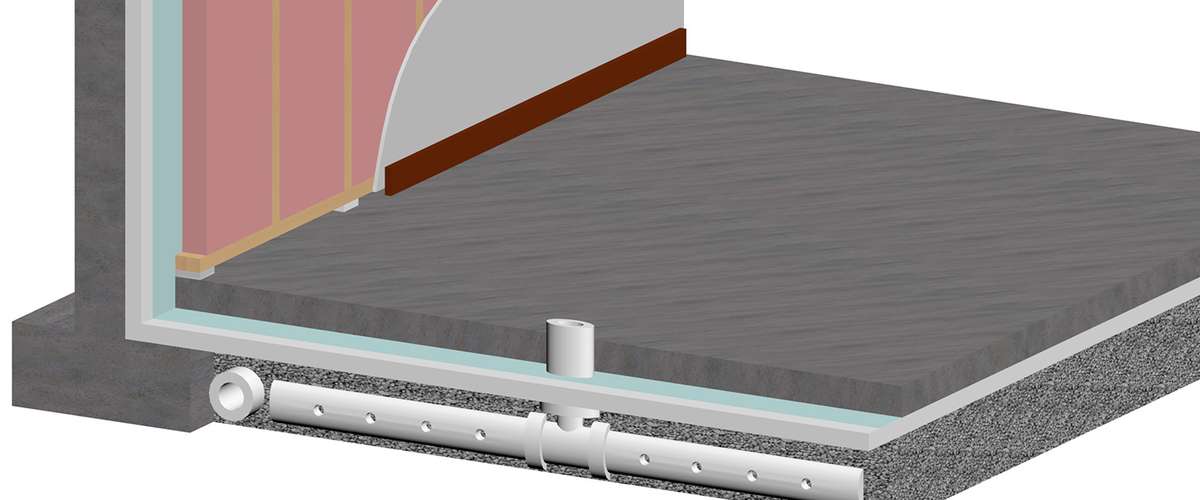












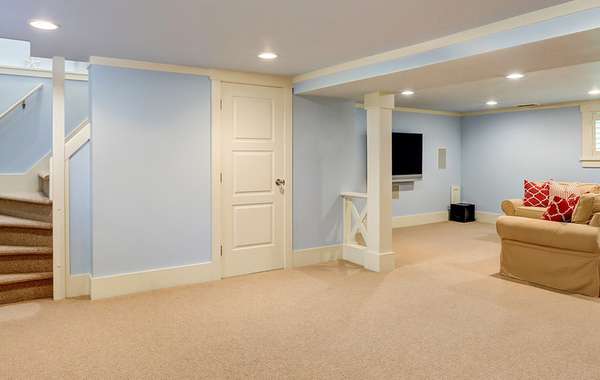
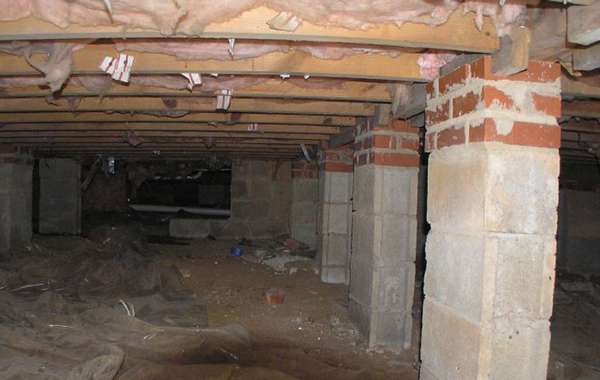
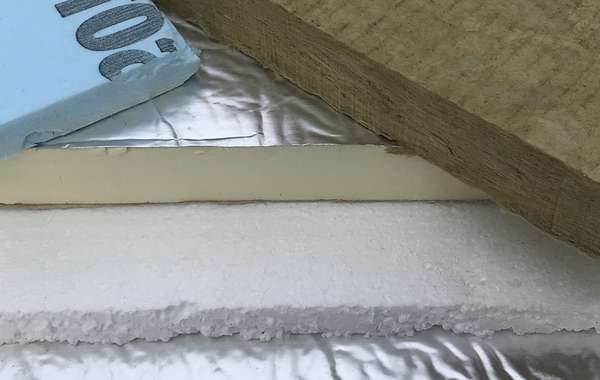
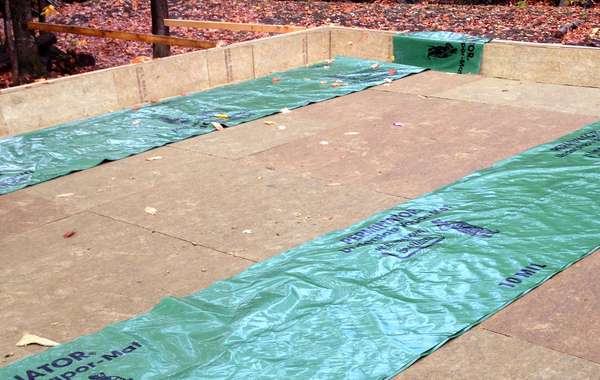
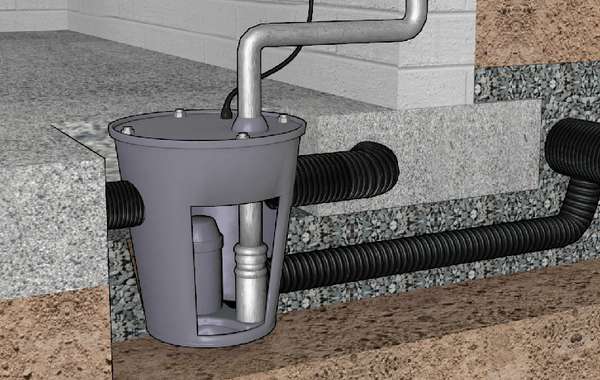
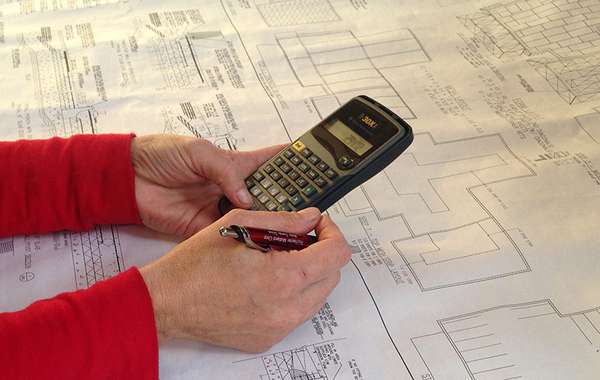
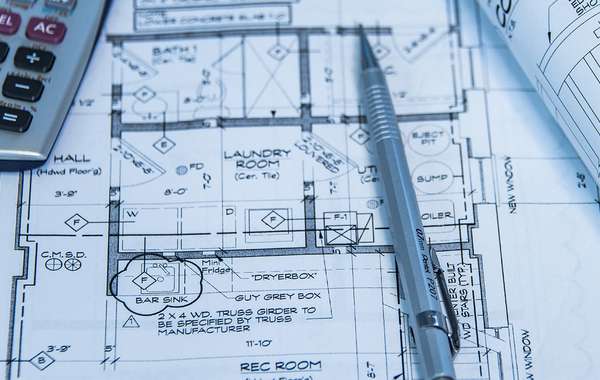
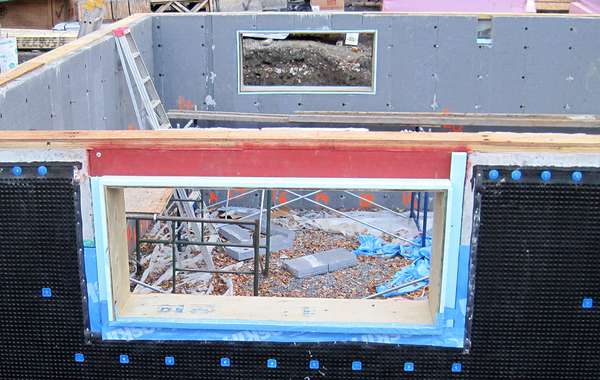
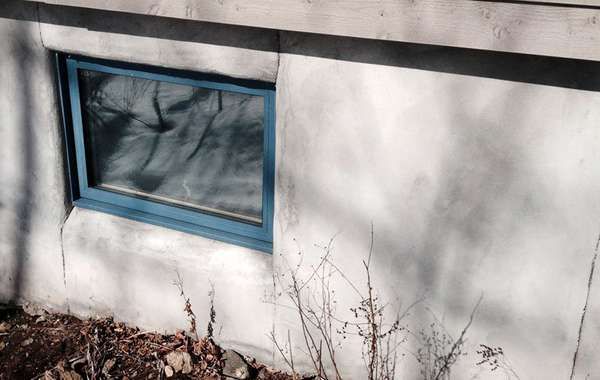
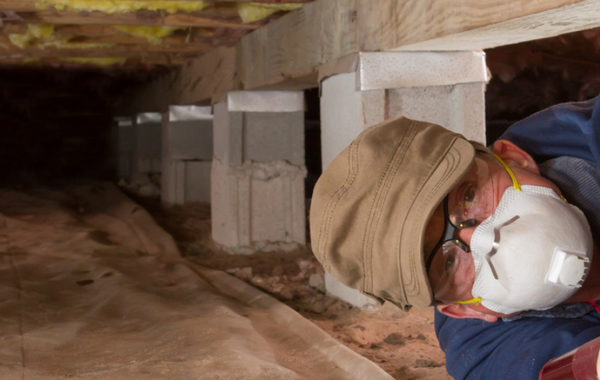
Vapou barrier is not for moisture but to keep the temperature from outside and inside balance or you will get condensation and mold. It a must have, they invented it for a reason. Think of it like double glazed windows. Have many basements have you damaged?
我认为你们的一些墙壁组件在这里混合了,蒸汽屏障是用来阻止蒸汽的,我从来没有听说过这个问题。标题本身很好地说明了它的预期目的,它旨在成为一个“屏障”,防止“蒸汽”。
I do commend you for not believing everything you read on the web, especially when something contradicts a practice that is ingrained in us, like putting poly on basement walls. So don't take it from me, keep on digging on the net until you are satisfied. I would recommend starting withJoe Lstiburek, the most recognized name in building science. Best regards.
Would like to confirm the information I've seen. I have a Toronto 107 year old semi detached home. Basement is 6' 4" to the joist and in 30 years have never had water in the basement. We do have efflorescence on the cement. Have long wanted to at least finish the walls to make it a bit more livable (maybe leave the ceiling joists as is) but have always been worried about mold. Am I correct to think that the EPS, 2 x 4, mineral wool batts, latex paint combination would be acceptable for my situation? Thanks for your help.
如果没有蒸汽屏障,石膏板就不会潮湿,霉菌就会在上面生长吗?
我明白你的想法,这是一个好问题,但不,没有蒸汽屏障的石膏板不应该有任何风险增加。对于霉菌的形成,或者“如果”它形成,这可能意味着有大量的水分从墙体组件中渗透进来,而通风设备和除湿器没有妥善管理。
That moisture isn't going to escape to the exterior so you are best to let it escape to the interior where it can be managed, otherwise it will rot all the framing. If you have very high relative humidity you will be at risk of mold developing on anything and everything down there, drywall included.
我知道你不想在饰钉和石膏板之间放聚乙烯,因为外面的潮湿空气会穿过混凝土被困在饰钉墙里。但为什么不用聚乙烯来对抗混凝土呢?
I was just watching a video by Home Depot where they do just that!
Any thoughts?
Yeah, go for it. There really isn't a single 'best' way to design and build a basement wall, think of it as a physics problem to solve. You can stick a vapour barrier against the concrete, in fact when you put rigid insulation boards against it that is in effect what you are doing as foam panels will act to slow or virtually stop vapour. We have'best practices for basement construction'您可能会感兴趣的页面,因为它突出显示了不同的选项。
Nice article. So how would you vapour proof and insulate the floor in this below-grade basement scenario? The obvious difference is it needs to weight bear. Would sheets of EPS covered with, say, plywood, then whatever your chosen floor surface is work?
Hi Jacob,
是的,这方面的措施是可行的。我们建议你先铺一层聚,然后是EPS,这样你就一定会阻止水分向上迁移。EPS开始合格的蒸汽屏障约2英寸,它减慢水分甚至更厚,但由于可能会有间隙之间的面板,然后你不能保证,泡沫板单独会停止蒸汽,但poly肯定会。
If I am not finishing the basement in my older bungalow and I use this product:
Roxul
Comfortbatt R14 to insulate walls.
隔热前要不要先刷乳胶漆?你是说我不需要在隔热层上加一个蒸汽屏障吗?
Hi Mara,
I suspect that a block wall in an older bungalow would not have exterior moisture protection, so yes, I would add a barrier of some sort to the interior. As it is, the blocks are likely just continually absorbing moisture and depositing it into your walls. Latex paint would offer some resisitance to moisture, but for the effort and cost I would propose you just do it with poly, then the roxul. that way all the moisture stays on the exterior. Roxul isn't harmed by moisture, but there is no sense letting it in anyway as it just adds humidity to the home for no reason.
And on a slightly different topic, I would be cautious about how much insulation you add to the interior of a cinder block foundation. As it is only held together by mortar at the joints, it is nowhere near as strong as a concrete wall. For the life of the home, that block wall has likely not frozen in the abscence of insulation, so, by now adding insulation to the interior it will likely freeze in the winter, and that added stress could lead to cracking.
If possible it is best to insulate a block wall from the exterior, but we realize that isn't always affordable or even possible. But do check the condition of the wall, if there is any cracking already you may be best to consult an engineer before creating a new condition for the wall like letting it freeze.
But regarding that you don't want to finish your basement, what do you mean? only install studs & leave it like that? I can't imagine how you are going to apply that comfortbatt without a stud.
My concrete basement walls already have a 2x4 framed wall. The stud wall is not yet insulated or drywalled (it was this way when we purchased the home). We are looking to finish the basement this year. What would you suggest to do? We obviously wouldn't be able to add 2" rigid insulation directly against the concrete now.
My basement wall occasionally leaks so I'm having my walls waterproofed from the inside using the interior membrane and sump pump arrangement (membrane on wall, trough at floor with weeping tile leading to simp). I am not sure how to insulate over it because I don't want to leave an air gap against the wall above the membrane (it will end about 5' from floor). How to insulate over such a varied surface? SPUF might be the best solution but I seem to have run out of gold bars :)
I have this in my house and was looking at how to frame and insulate with this system in place. Can you tell me how you did it and how it turned out?
My understanding is that is in fact what you do to create a vapour barrier for the reason you suggest. The air on both sides of the vapour barrier on the inside of the wall is essentially the same temp so there is no condensation and the moist inside air cannot travel into the wall and condense against the cold concrete. But I'm no expert, it is just what a contractor told me.
I moved into the a house that had a room in the basement insulated with 4 inch polystyrene sheets and finished with a skim coat of what I believe to be outdoor stucco. My wife is reacting to whatever is on the walls. We know it's this room that is effecting her breathing because when I seal it off from the house her breathing improves. I have coated the walls with afm mexeseal but the off gasses are still bothering her. My next step is to rip out everything and start over. My question is can polystyrene cause breathing problems in a healthy person and if so is there another product that we can use as insulation that ticks all the boxes you have covered in this article? Also, can exterior stucco cause breathing problems if it's used inside?
P.S. I think the poly is exterior as well.
If the stud wall is done I'd at least go with the Roxul rather than fiberglass, and avoid the poly and go with the vapour retarder paint so it can dry a bit inwards. There is 'idea' construction and then there is what makes sense in an given situation. Even with the stud wall already you can still do it in a way where you are better off than most basements.
Hi Adrian
I was recently speaking with a doctor that specializes in environmental health issues, and she says that a lot of people are negatively affected by foam insulation. I am not an expert in what materials will cause people grief, and it would be different depending on the person, but myself I don't see a big connection between exterior stucco and interior air quality. That said - we had a woman who is extremely sensitive to chemicals come and visit our Edelweiss House and she was fine with it. She did a smell test with individual materials, perhaps that could be a valuable technique for your wife before installing. I'd say you'd be best with Natural materials like Roxul which is a recycled stone dust. It really depends on her level of sensitivity. Here is a link to the demo house, all the products there passed this one woman's test, no guarantee they will work for your wife but its a starting place at least. Good luck!//www.esb-agile.com/demo...
I'd need a better visualization on that Dan if you can drop a drawing or email me at[email protected]SPUF works great in such capacities, granted it can be costly but maybe limit its use to where its absolutely necessary? Also - new blowing agents for spray foam make it finally a green option, and non-toxic as well in case that helps with your decision -//www.esb-agile.com/news...
Sorry for the painfully late reply Jason, but at this point I'm trying to do some catch up in case others have similar issues. If you keep the basement relative humidity low enough (under 50) you shouldn't have a problem, there is a bigger concern with moisture moving inwards than moisture moving outwards, that's the reason for the slightly more permeable 'vapour barrier' would would more accurately be called a 'vapour retarder'. Moisture can build up inside the wall assembly and cause mold behind the drywall if you have an impermeable vapour barrier there.
Thanks for your help Mike. I've removed the styrofoam insulation from the basement and will frame it, Insulate with Roxul drywall and no VOC paint as the vapour barrier. The walls were completely dry when we removed the foam. My question is should I leave a 1"air space between walls and Insulation or can the ruxol be against the wall.
墙是干的,真是个好消息。因为Roxul是疏水的,它不会吸收任何水分,所以根据我们的工程师,它罚款对着墙,螺柱可以把它在适当的地方。我们从本杰明·摩尔(Benjamin Moore)那里获得了阻气底漆,但它不是零voc,只是“低”voc,我真的不知道其他制造商提供什么。另一种选择是一种名为Membrain的可呼吸“蒸汽屏障”,当湿度过大时,毛孔会打开,让水分通过。很多时候建筑检查员会叫你出没有6百万聚蒸汽屏障,这是一种让他们高兴的方式,但不会腐烂你的墙。我很抱歉没有早点给你回复,如果你愿意,给我写信,也许我们可以聊聊,你妻子对空气质量的反应增加了一些风险,所以我想确保你能正确地引导你。[email protected]
迈克,
Great article - it is very helpful and providing much needed guidance.
问:我的房子有45年历史,地下室有一面2x2的柱墙(在混凝土板上,而不是在EPS垫片上),里面填充了玻璃纤维隔热材料,全部直接靠在砖墙上,面对着木镶板。没有蒸汽屏障,没有任何霉菌,也没有任何泄漏问题。冬天的房间有点冷,但我认为这是因为铺在石板上的地毯没有其他隔热材料。我们在安大略省南部,所以冬天通常很冷。
I am redoing the space and am wondering if I should take the walls down and replace with EPS/mineral wool/drywall as per the article; or just put the drywall up on the existing 2x2 studs? I am already planning to install an insulated sub-floor.
你觉得呢?
Thanks in advance!
Great article. What do you recommend to use below flooring to provide a vapor and insulation layer? I'm looking to lay carpet down on the slab without radiant heat below it and am concerned about both moisture and the low ambient floor temperature.
Hi !
我对我的地下室墙壁的固体XPS面板解决方案很感兴趣,因为它将是相当便宜的完成(约2400加元,包括石膏板和油漆),我可以自己做。但是,我想知道如果在基础墙外安装防水膜,是否还可以使用这种技术。
Amdry insulated subfloor panel
终于有人有常识了。保利是最糟糕的,我可以说泰维希也是个骗局。
If the concrete is acting like a sponge and we place rigid foam against it , is there not a chance for a mold to grow between the two?
Thanks
I am having a new home built with 9' poured walls. I am going to finish the basement myself. My concern is insulating the floor. I don't want to use treated wood as batten due to I know how it curls when drying. It would take a lot of screws to keep flat. Is there anthing wrong with what I propose? Lay a plastic vapor barrier down. Put 2" foam boards down. Put 23/32 plywood down. And then another layer of 23/3 plywood down on top perpendicular. Screw both sheets together and have carpet installed on top? Is it ok? Is it overkill? Does the plywood need to be moisure resistant? Thanks
If you have a layer of poly and then 2 inches of EPS foam, I wouldn't be too concerned about the plywood as I think you have separated it well from any chance of moisture assuming the following : If it's a new basement you are building, then presumably you have the opportunity to take some additional steps towards protecting it, meaning - proper exterior water protection, drainage, a weeping tile that can drain bulk water away from the foundation, and a sump pump.
但我想知道,如果你有一个胶合板底层直接铺设在几英寸的泡沫,你会不会发现它有点海绵。如果你首先采取措施保护它不被洪水淹没,我可能也会考虑铺设一个防水的凹膜,留出一点空间让任何偶然的水移动,然后一些2x3的绝缘板之间,然后你的胶合板底层。
最近,我用2英寸的eps泡沫塑料将我的地下室墙壁固定在外墙上,所有的接缝都用胶带粘住,墙角喷上泡沫塑料。
我在泡沫和框架之间留下了1”的空隙,当我用r12隔热板绝缘墙壁时,我注意到在绝缘材料接触泡沫的地方,湿气正在形成。这是什么原因造成的呢?下一步应该采取什么行动来纠正这一点??
Does anyone have any information that would help? It would be much appreciated.
Hi Kurt
I'll recap that to be sure I have the assembly correct -
2 inches of EPS foam attached directly to the concrete with no air gap between the foam and concrete joints taped, but a 1 inch air gap between the interior surface or the foam board and the stud wall, and fiberglass batt insulation in the stud bays. Correct that if any of it is wrong, and, do you have a 6-mil poly barrier sealing the whole wall together?
You have a source of moisture somewhere and it's a case of finding it, but also a matter of letting it out. Poly vapor barriers on the interior surface of a basement wall are not at all a good idea, it will trap the moisture. So if you have one, that's at least part of what is causing the problem. Better is if moisture in a wall can dry to the interior (since it can't dry to the exterior), and then it can be handled by ventilation equipment or dehumidifiers.
没有一个聚屏障的水分应该能够干燥到内部,除非有其他真正错误的事情在这里。
That is correct about the wall assembly, but I have no poly on the walls.
I noticed moisture was forming where batts were contacting the foam. I'm thinking this is due to the warm batt touching the cool styrofoam and creating condensation. I've have a dehumidifier running and it's at about 38%. I've also just had an HRV installed but don't want to hook it up until the basement is taped. Will and HRV correct this or am I overthinking it? I would just hate to finish the basement and have issues when this would be the time to solve them and correct it.
Thanks for your reply Mike!
Is the concrete floor in the wall and 1 inch gap area insulated or exposed to the gap? If exposed, is it possible that is your moisture source? Or possibly from other parts of the basement if your wall wasn't fully sealed up yet?
I spray foamed the bottom of the foam panels so there is an insignificant amount, if and concrete showing. The bottom 4' of the insulation doesn't seem to sweat. Just the part of the foundation close to and above grade.
Hi Mike, can you elaborate on the floor insulation approaches? I thought most poured floors have some sort of membrane/vapor barrier underneath the pour. Wouldn't adding another vapor barrier above the floor be a problem in that scenario?
Hi Eric,
If there is a vapor barrier already, then presumably the concrete would be dry as it is protected from below and able to try into the air above. Adding another vapor barrier wouldn’t be a problem for that reason, but also because there is nothing in a floor that can rot. If you aren’t sure if there is a vapor barrier then you really should have one, and most recently built basements would have at least 1.25 inches of EPS insulation then a vapour barrier, so really all that would be sandwiched between vapor control layers would be concrete.
And, the assembly shown in that image includes a 6 mil poly barrier for radon gas protection, but worth noting is that 2 inches is about the thickness when EPS rigid insulation acts as a vapor barrier anyway.
还有,你抓住了并质疑了“双重蒸汽屏障”!
I have an older(1944) built home that we just bought about a year ago. I recently built a 5th bedroom in the basement, and discovered that behind the wallboard, there was no insulation at all, just bare concrete. I think I followed your advise and glued 2 inch ridgid board directly to the concrete, spray foamed the top gaps between foam amd joists and rim board and tuck taped all seams.
然后,我在整个房间铺设了一些路障底层板,然后在底层板的顶部建造了一个2x4的墙,紧贴着脊板,并用roxul绝缘材料将这些空腔绝缘。然后我用石膏板在上面盖上底漆,涂上乳胶漆。我的问题是,这样做正确吗?我现在要开始地下室的其他部分了,我应该继续这样做吗?还是让一个喷泡沫的人直接喷在混凝土上更好?地下室其余部分的地板也是一个问题。A已经讨论铺设一些酒窝膜与胶合板作为路障地板是一个有点如果痛苦安装在地板,倒不是很好。有什么建议吗?
你在墙壁上的做法听起来不错,所以如果你对价格和工作量满意,我不一定会换成喷雾泡沫,除非你厌倦了这样的工作,因为它可能会让你花费更多。If you do go with spray foam, see our page here to choose the best brand -
New HFO blowing agents for spray foam will make it over 1,000 times less harmful to the climate
The only thing that concerns me is the barricade floor. I am no suggesting you lift what you did, but I may add a step - a layer of 6 mil poly ahead of time. since those panels butt up against each other with the vapor control layer at the bottom, there is no way to seal them. If you don't have a vapour barrier below the slab (which was not a practice done in 1944) then the concrete will constantly be wicking moisture from the groudn below. So moisture could migrate through the seams between each of those panels and cause the OSB to deteriorate over time. Again, I'm not suggesting you lift your existing floor, but this would be a little upgrade that may extend the life, and it means you aren't switching building materials and causing a change in floor level.
一个问题。我一直看到关于EPS和XPS脊状泡沫的矛盾信息。如果我坚持上面的方法(没有蒸汽变异体,在泡沫粘到混凝土墙后隔热),你的建议是什么,我可以摆脱EPS吗?
Hi, thanks for this awesome article. I just wanted to make sure I understand what you are recommending correctly. If I use mineral wool rigid board insulation (e.g. Comfortboard) instead of XPS or EPS panels right against the concrete, would it be appropriate to put in vapour barrier polyethylene on the interior side of the Comfortboard (stapled to the exterior of the stud wall), and then fill in the stud wall with mineral wool bats and finish with drywall? I ask this because it seems to me that mineral wool is completely permeable to moisture (unlike the foam products), so it would seem important to compensate for that by adding in a vapour barrier. I live in Edmonton, Canada, so our winters are cold.
Hi Mike, my home has framing on the exterior walls of the basement. I am about to start finishing the basement and I noticed there is no polyethylene between the bottom plates and the concrete. The bottom plate is also regular SPF. Not pressure treated. What should I do? Do I need to rip out the walls and start over?
Hi Frank. Tough call, it's best to keep a moisture barrier between them but I imagine that will be a lot of work. Is there any signs of water damage on the floor from previous flooding? Is it humid? Most basement finishing is done exactly like that so I'm reluctant to say "yeah rip them out". So I assume there is no vapor barrier against the concrete behind the stud wall either? That's where it's best to have it. If you leave it as is just be sure not to put a vapor barrier after the studs to seal it in with the wet concrete, as you likely read above, that's the biggest and most common mistake ever made in basements. If there was anyway to pry the wall up a bit and slip some plastic under it that wouldn't be a bad addition, but really I'd base it on the humidity level and chance of flooding. And is it a new house with a vapor barrier under the slab?
Hi Mike, thank you for your quick reply. The house was built in 2005. No idea if there is a vapor barrier under the slab but I will try to find out. There is no sign of humidity or water damage in the basement. Also no chance of flooding as we are on a hill. I will check if there is a vapor barrier behind the wall against the concrete. Who knows, maybe I will be lucky!
I'm adding a 2 piece washroom in a finished basement. The entire basement was finished with tar paper on foundation wall 2 by 2 framing with fiberglass insulation, vapour barrier and drywall. I have gutted the room down to foundation wall and am planning to use 2" rigid glued to wall 2 by 4 framing with roxul and drywall. Is this best approach given that the rest of the basement was done incorrectly according to this article?
Can anyone tell me if the manufacturer ISOLOFOAM is giving me the right advice for the installation procedures for their EPS High Density (16 PSI), 2 1/2" thick?
我的6英寸厚的地下室板根本没有绝缘,只有7英寸的砾石在下面,直接进入沙土。
A possible issue I may have though is that if my basement floor ever get flooded again (got exactly 2" of water onto it 2 years ago due to the 5' street ditch being jammed with ice and snow), the entire insulation and subfloor may end up floating on water.
I was thinking of leveling the existing rough concrete floor to level it so as to not have air gaps below the foam boards. So, to smear the sand & cement mix on the floor, thereafter place the HD EPS boards right onto the new uncured concrete layer to seal and hold the foam boards into place. If needs be, place the poly over the 2 1/2" EPS boards for some radon protection? Would that work?
If you've had flooding before I'dinstall a sump pump before insulating your basement floor. levelling is not a bad idea if you have the head room you can spare, maybe use something like a 3/8th crushed stone though and leave it as is. I don't see why you'd need to pour concrete, if you cut the EPS to fit fairly well and even spray foam them at the walls then they wouldn't need to be set in concrete not to move. If it's just stone instead of concrete you can better ensure the EPS won't get saturated with water as it will have better drainage to your sump pump. And it's really easy to level using a transit, which you can rent if you don't have one (not many people have one).
And yes you can put your poly / radon barrier on top of the EPS. Here is our page onhow to mitigate radon gas in basements,如果你自己做的话,会帮助你正确地做。你需要确保有一个被动或主动的氡堆,并将其排放出房子,边缘托梁是一个很好的地方,这样你就可以很容易地看到它。有时它们会结霜,你可以清除它。如果它在你的屋顶上,你永远不会知道它是否被堵住了。
Thank you, Mike for this article. My husband and I would like to finish 3/4 of our 1000 sq ft cinderblock 1959 basement in Raleigh, NC. We get a few hearty freezes a year. We do not have water in the basement, nor french drains i'm guessing. We do have efloerescence in one corner but we hope we've fixed this with gutter repair, not 100% sure though. Years ago we also halfheartedly painted the walls with limeprime. I was thinking of just staining and sealing the concrete. I am mold sensitive and mildly chem as well. As long as we keep the dehumidifier going i'm currently just fine but without it I am not. It's not musty at all with it and only very mildly without.
My questions are:
1.我们可以用干墙来装饰天花板吗?2.我们在楼板托梁下安装了大型镀锌钢暖通管道。我们可以把它们也藏在干燥的墙壁里吗?我们需要隔热来防止霉菌吗?完成天花板有风险吗?3.我丈夫已经在内墙安装了钢钉和防霉石膏板,以防万一。外墙的最佳处理方法是什么?你能建议用什么来完成墙壁吗? We are willing to pay to do it right but the sky is not the limit on what we can spend. But lots of sweat equity on hand. We want to be eco-friendly. 4. If we divide the finished space into 3 rooms plus bath, would each space require a dehumidifier or would leaving the doors open so they are all connect suffice. 5. Finally, do we need to treat the air? (i.e. hvac) to keep it dry and healthy or is our dehumidifier enough? Our radon level hovers around 1. Thank you so much, Mike, for what you do and for sharing your expertise. warm thanks, Aminah
I have seen people using house wrap against the wall before building the stud walls and installing insulation. There point theybsaid was to prevent the water yet let it breathe. Does this make sense?
我马上要重新装修地下室,有几个问题想问你。我住在芝加哥附近,如果我没看错的话,我住在第五气候带。这房子是60年代建的,所以我怀疑有没有外部屏障。我有一个煤渣砌块墙的地下室,目前上面覆盖着木镶板。房子空着的时候似乎有一些水的损坏,但我们还没有打开面板进行进一步的调查,所以很明显,我之后会知道更多的情况。我在考虑在砌块墙上放一些防蒸汽涂料,然后可能用一些2”EPS粘在墙上,用干墙建成后的螺柱墙。我只是好奇根据这些信息可能会有什么建议。
Hi Mike,
In September 2021, we had waterproofed our foundation (Rub R Wall), and a simple board wrap around the water proofing spray. French drain and sump pump installed as well.
We are now looking to redo the insulation in our basement (i.e. ~4-5 feet below grade) And wondering if you would have a recommendation between spray foam VS Rockwool. Is there also a recommended period for the interior basement walls to dry first ?
I have a home 3 years old. Basement is not finished and looking to finish. Concrete walls and has plastic shiny bag insulation on walls tacked to the concrete. Aprrox 1/2 of the basement is below grade and other half we have a walk out. Does the shiny bag insulation need to come down prior to me moving forward finsihing basement or could I go over the existing bag insulation with rigid board insulation and drywall? I'm in Zone 5 of the US
Hi Chris, I'm not sure what you mean by 'shiny bag' insulation, is it foil? The most important thing with finishing a basement or insulating walls is to not trap moisture inside, and certainly not with wood framing. Moisture needs to be kept out of the basement by stoping it at the source, which is the concrete. Describe that better if you can please and maybe we can point you in the right direction. Let us know the composition from concrete inwards - if there are wood studs, rigid foam, fiberglass, vapor barrier, let us know the order.
I love how the MOST important factor regarding mitigating mold growth is proper ventilation and yet there is very little discussion in these comments about the condition of basement spaces. Do you have forced air in the basement? Supply and returns? A dehumidifier? Fun fact; humid environments will not grow mold if properly ventilated. And yet so many people are quick the suffocate their wall systems with plastics and foam. It was put best in the article when acknowledging that above grade walls need to be ventilated to the exterior... Well, surprise... Below grade walls need to be ventilated to the interior. They just do. It's really unfortunate that some codes enforce vapor barriers on interior basement walls. We all know how building science "facts" tend to change as new studies come out. And as for the toxic foam attempting to hermetically seal every nook and cranny - Consider this as cakey makeup clogging the pores in your skin. Not Good. In most cases, you do not even need to insulate the interior side of the basement wall if completely below grade and properly conditioned (heated and cooled). Earth is an amazing insulator which is why so many animal species build burrows and dens to combat the winter months. The rim joist is the only area that truly needs to be insulated with a nice natural non-toxic wool insulation. This space should be boxed out with a soffit around the perimeter and ventilated to the interior with pass-through grilles. Think more like nature.
Hi Stephen
Earth is not an insulator in any modern sense of the word. The little critters that use the ground to stay warm are the ones that weren't able to find a nice batt of fiberglass insulation in a wall or crawlspace they could burrow into, the ones that did are much warmer and happier. If you don't insulate your basement in a cold climate you are needlessly paying to heat the ground, full stop. And it will keep taking as much heat as you throw at it.
Here is a page abouthow much insulation a basement needs, which describes how heat moves and includes a thermal image of the difference between an insulated basement floor and an unisulated one.
我喜欢你的评论“像自然一样思考”,我同意这一点,但这意味着尊重物理定律。大自然的作用意味着热量从温暖的地方转移到寒冷的地方,而在寒冷的气候中,如果你不采取措施将热量保持在建筑围护结构内,就意味着热量从温暖的地下室转移到寒冷的地面。
我们有水进入我们的下层生活区,那里部分低于地面。把地毯,半面墙和壁炉都拆了。有一家公司做室内脚排水口和污水坑。我清理了砌块墙,并密封了我发现的任何小裂缝。用油性Zinsser密封漆涂成黑色。用喷雾泡沫封住所有我能找到的漏气处。用r7.5刚性泡沫板和胶带缝起来。
my question: I can only use 2x2 ferring strips for the wall without creating a ton of extra finishing carpentry work for myself with the ledge trim etc... so that's what I plan to do. Is there a rocwul product that is best for the cavities? That's what I was planning to use but wasn't sure if I can compress it.
I think you would be best to tryRockwool comfortboard rather than batts(岩棉过去被称为Roxul),它们有不同的厚度,从一英寸开始。如果你找不到它,你可以安全地继续使用坚硬的EPS泡沫板。岩棉球可以在不影响性能的情况下压缩,但它们的密度比玻璃纤维大得多,所以试图将3.5英寸的岩棉球塞进2英寸的空间将是一个相当大的挑战!
Hi Mike,
只是想确认一下。我计划在我的地下室墙壁上粘2”箔面polyiso,留下1”的缺口,然后安装我的螺柱。我不应该用箔纸吗?